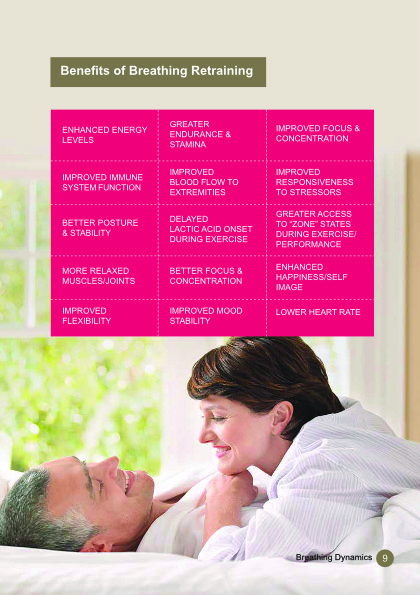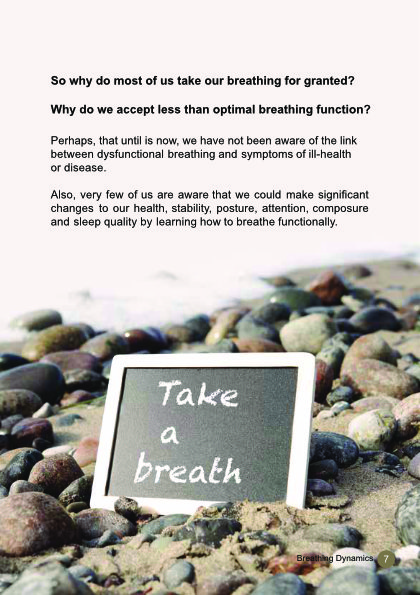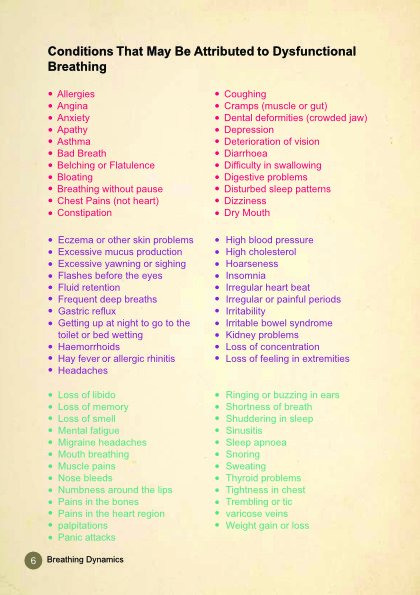Description
Breathing Is Life
Apart from our heartbeat, breathing is the body function we perform more than any other. We cannot live without breathing for more than a few minutes… Yet most of us take our breathing completely for granted – we breathe, we’re alive, no problem.
RIGHT?
UNFORTUNATELY NOT.
The vast majority of us breathe nowhere near as efficiently as we’re supposed to or as we’re built to.
DID YOU KNOW?
- We are born to breathe through the nose, with the mouth only being used for breathing in emergencies.
- Our respiratory system is structured for us to breathe mostly using our diaphragm – meaning that our belly rises and falls (or expands and contracts) as a result – not our chest and shoulders.
- Finally, our breathing should not be audible at all. It should ideally be silent.
If we’re honest, this is far from how most of us breathe….BUT, did you know that the quality of your breathing affects the quality of your life?
Dysfunctional breathing plays a major role in the cause and pathology of many common illnesses, including:
- snoring and sleep apnoea
- fatigue
- asthma and allergies
- anxiety
- high blood pressure
- headaches and migraines
- and many more..
Conditions That May Be Attributed to Dysfunctional Breathing:
- Allergies
- Angina
- Anxiety
- Apathy
- Asthma
- Bad Breath
- Belching or Flatulence
- Bloating
- Breathing without pause
- Chest Pains (not heart)
- Constipation
- Coughing
- Cramps (muscle or gut)
- Dental deformities (crowded jaw)
- Depression
- Deterioration of vision
- Diarrhoea
- Difficulty in swallowing
- Digestive problems
- Disturbed sleep patterns
- Dizziness
- Dry Mouth
- Eczema or other skin problems
- Excessive mucus production
- Excessive yawning or sighing
- Flashes before the eyes
- Fluid retention
- Frequent deep breaths
- Gastric reflux
- Getting up at night to go to the toilet or bed wetting
- Haemorrhoids
- Hay fever or allergic rhinitis
- Headaches
- High blood pressure
- High cholesterol
- Hoarseness
- Insomnia
- Irregular heart beat
- Irregular or painful periods
- Irritability
- Irritable bowel syndrome
- Kidney problems
- Loss of concentration
- Loss of feeling in extremities
- Loss of libido
- Loss of memory
- Loss of smell
- Mental fatigue
- Migraine headaches
- Mouth breathing
- Muscle pains
- Nose bleeds
- Numbness around the lips
- Pains in the bones
- Pains in the heart region
- Palpitations
- Panic attacks
- Ringing or buzzing in ears
- Shortness of breath
- Shuddering in sleep
- Sinusitis
- Sleep apnoea
- Snoring
- Sweating
- Thyroid problems
- Tightness in chest
- Trembling or tic
- Varicose veins
- Weight gain or loss
Very few of us are aware that we could make significant changes to our health, stability, posture, attention, composure and sleep quality by learning how to breathe functionally.
The good news is that of all the functions in our body that are automatic (they work whether we are aware of them or not), breathing is the one function we can consciously control…and quite easily. With the right coaching, anyone’s breathing can be retrained to functional or ‘normal’ levels. That is why we are here.





